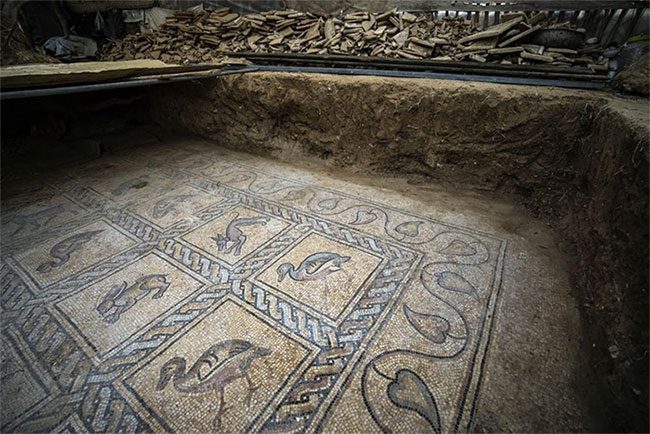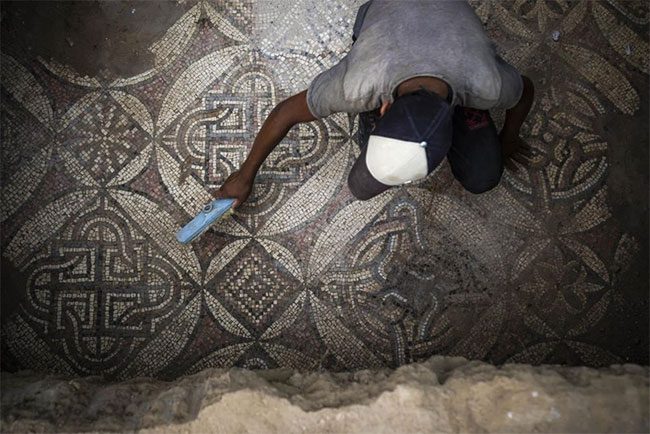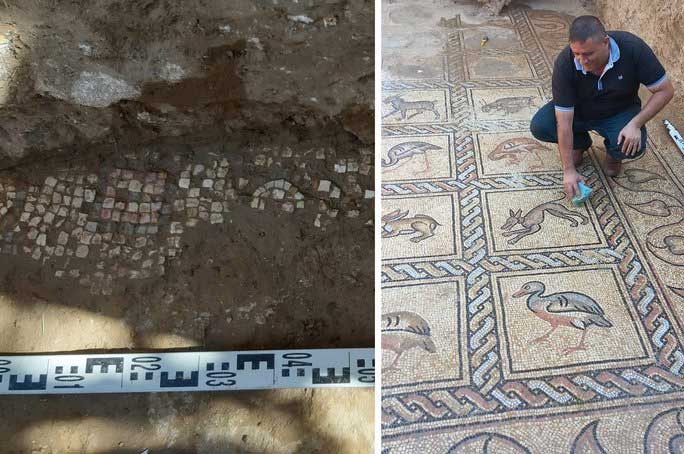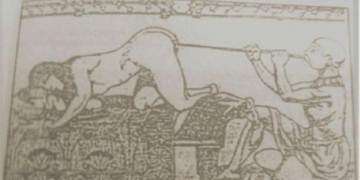Accidentally unearthed in the backyard of a farmer living in the Gaza Strip, a mosaic artifact is capturing the attention of archaeologists and raising concerns about preservation issues.
Last spring, while a Palestinian farmer was planting new olive trees, his shovel suddenly struck a hard surface.
Over the course of three months, he and his son gradually uncovered a Byzantine mosaic floor that is highly intricate. Experts regard this as one of the largest archaeological finds ever discovered in Gaza.
An Exquisite Discovery
This discovery has generated excitement among archaeologists and local Hamas leaders, who are preparing for a major announcement in the coming days.
It also calls for better protection of Gaza’s artifacts, a “fragile” treasure trove situated in locations that are constantly threatened by a lack of awareness and resources, as well as the risk of destruction from the ongoing conflict between Israel and Palestinian militants.

The mosaic floor features images of 17 animal and bird species intricately designed. (Photo: AP).
The mosaic floor was discovered just one kilometer from the Israeli border. It depicts 17 symbolically represented animal and bird species, all in good condition with vibrant colors.
René Elter, an archaeologist from the Biblical and Archaeological School of Jerusalem, stated: “This is one of the most beautiful mosaics discovered in Gaza, both in terms of artistic quality and geometric complexity.”
He added: “Never before has there been such an exquisite mosaic showcasing precision in design and rich colors as found in the Gaza Strip.”
Elter indicated that this floor dates back to between the 5th and 7th centuries. However, more scientific excavation is needed to accurately determine the construction period and whether it was part of a religious complex or an arena.
While Elter could not visit the site directly, he has viewed photos and videos sent by local research partners.
A Land of Suffering
The Gaza Strip, a coastal territory of Palestine nestled between Israel and Egypt, was a bustling trade route between Egypt and the Levant in ancient times.
It still retains remnants from ancient civilizations, spanning the Bronze Age to the Islamic and Ottoman periods.

Clear mosaic patterns discovered at the excavation site of the farmer in Bureij town. (Photo: AP).
However, these treasures are rarely protected. In the past, they were often looted.
Recently, some artifacts and sites have been damaged or destroyed for construction projects or due to clashes with Israel.
Israel and Egypt have imposed a blockade on the Gaza Strip since Hamas took control in 2007.
Hamas itself is not overly concerned with preservation, as it must meet the needs of a growing population. Currently, over 2.3 million people live in this territory of just 300 square kilometers.
In 2017, Hamas flattened a large area of a site containing 4,500-year-old Bronze Age artifacts to build housing for its members.
Earlier this year, bulldozers began work on a housing project funded by Egypt in northern Gaza, uncovering a Roman-era tomb.
Among the few preserved sites in Gaza are the Monastery of Saint Hilarion, which has existed since the late Roman Empire to the Umayyad period of Islam, and a Byzantine church that international aid organizations restored and opened this year in northern Gaza.
Even though these sites also feature mosaic floors, Elter still considers the new discovery in Bureij, central Gaza, to be “special.”
The archaeological management department of Hamas described this mosaic artifact as “a major archaeological discovery” but declined to comment further, promising an official announcement later.
The landowner has covered the excavation site with sheets of metal, hoping to receive compensation for protecting this unique heritage find.

This floor dates back to between the 5th and 7th centuries.
The land containing the mosaic spans approximately 500 square meters. Three points excavated provide a glimpse into this area.
The largest excavation pit, measuring about 2×3 meters, features 17 drawings of animal species. The other two sections display intricate patterns of tiles. The roots of an old olive tree have damaged some parts of the mosaic, but overall the total area is estimated to be around 23 square meters.
Elter stated that this discovery is in a state of “acute danger” due to its proximity to the Israeli separation barrier.
Areas like this along the barrier frequently experience clashes or attacks from Israel. Just last month, Israel engaged in fierce fighting with the Islamic Jihad group in Gaza, during which Israel shelled militia positions.
Elter is also concerned that amateur excavators could damage the artifacts. He hopes a professional excavation team will be dispatched to properly handle, restore, and protect the site.





















































